When the McLaren 720S debuted at the 2017 Geneva Motor Show, there was a sense that the guys and girls at Woking had pulled off something rather special. So its replacement — the new 2024 McLaren 750S — has some rather large shoes to fill. Good thing, then, that what you’re looking at is the lightest and most powerful series production McLaren ever made.
But, if it looks familiar, that’s because this isn’t a ground-up re-imagination of the British brand’s Super Series mainstay. Much like the 650S was an evolution of the 12C, the new 750S takes the impressive foundations of the car it replaces and refines them. The result is a lighter, more powerful, and more engaging supercar from McLaren, available from launch in both Coupe and Spider variants.
| SPECS | |
|---|---|
| Engine | › M840T 4.0-liter twin-turbo V8 |
| Drivetrain | › Longitudinal mid-engined, RWD |
| Power | › 740hp @ 7,500rpm |
| Torque | › 590hp @ 5,500rpm |
| Transmission | › 7 Speed SSG. Comfort, Sport and Track |
| Brakes | › Carbon Ceramic Discs |
| Dimensions | › 180 in. L x 76 in. W x 47 in. H / 105 in. WB |
| Dry Weight | › coupe 2,815 lbs / Spider 2,923 lbs |
An Evolution Of The 720S
The headline bits are carried over from the 720S. The engine remains a twin-turbocharged 4.0-liter V8. There’s a carbon fiber monocoque, and the car retains a hydraulic suspension set-up. But everything has been honed to maximize the 750S’ potential.
The engine outputs more power than before, the boffins back at the factory have managed to shave off whatever gram they can from the chassis, and the suspension is now the latest PCC III with lightened components and improved geometry. Additionally, the 750S features a quicker steering ratio and power assistance pump. With all this, McLaren claims that new or changed components make up 30 percent of the 750S.
Power Increased By A Smidgen
advertisement scroll to continue
In the middle of the teardrop shape sits the twin-turbo-charged four-liter V8 McLaren M840T engine. For the 750S, the boost pressure has been turned up, while the lightened pistons of the 765LT have been added. The flat-plane crank engine now puts out 740 bhp (750 PS / 552 kW) and 590 lbs-ft (800 Nm) of torque.
Granted, the bump in power is just 4 percent on paper over the 720S, but the power and torque figures now eclipse that of the P1 (727 bhp and 531 lb-ft), making the 750S the most potent production creation for McLaren.
| Performance | |
|---|---|
| 0-60mph (96 km/h) – Both | 2.7 seconds |
| 0-62mph (100 km/h) – Both | 2.8 seconds |
| 0-124mph (200 km/h) – Coupe | 7.2 seconds |
| 0-124mph (200 km/h) – Spider | 7.3 seconds |
| 0-186mph (299 km/h) – Coupe | 19.8 seconds |
| 0-186mph (299 km/h) – Spider | 20.4 seconds |
| 1⁄4 mile – Coupe | 10.1 seconds |
| 1⁄4 mile – Spider | 10.3 seconds |
| Top Speed – Both | 206 mph (332 km/h) |
| 124mph-0 braking – Both | 371 ft |
| 62mph-0 braking – Both | 98.0 ft |
The 750S is quoted as just a hair quicker than its predecessor, aided by a shortened final drive ratio, with a 0–60 mph (0–96 km/h) time of 2.7 seconds. If you keep your foot planted, you’ll see 124 mph (200 km/h) in 7.2 seconds (0.1 seconds slower in the Spider) and 186 mph (299 km/h) in 19.8 seconds (20.4 seconds in the Spider).
Other improvements to complement the powerplant include a lighter center-exit exhaust system that has been played around with to improve the acoustics. In doing so, the firing order has been muted in some places and enhanced in others to create what McLaren’s engineers call “a greater crescendo at high engine speeds.”
Shaved Weight
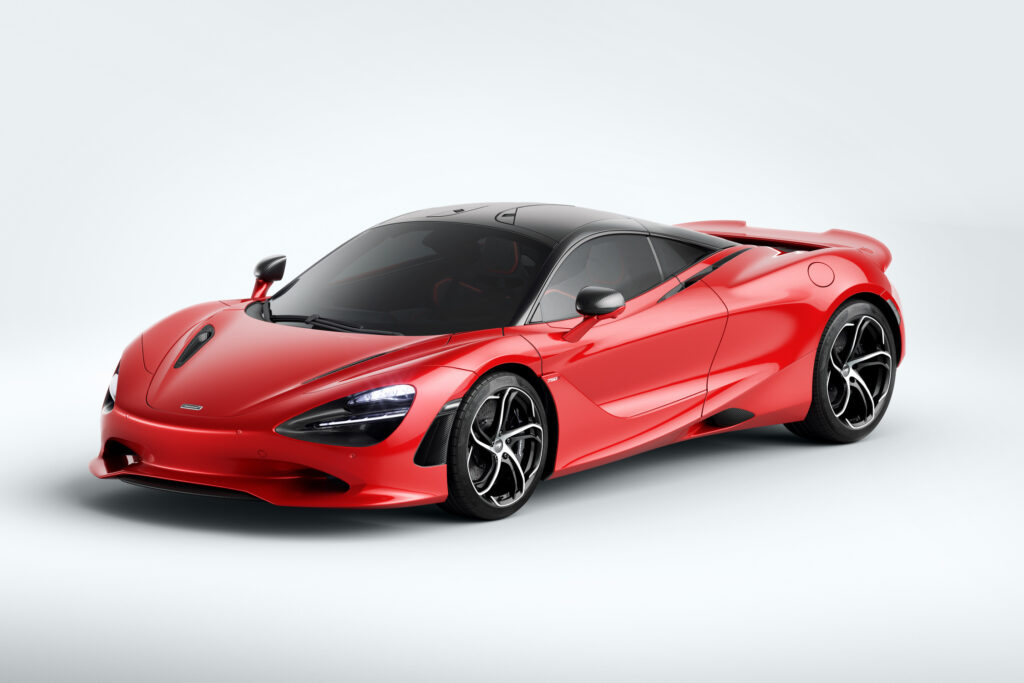
McLaren’s big accomplishment is the weight saved with the 750S. The British supercar maker claims that the 750S leads the segment with its power-to-weight ratio of 579 bhp-per-tonne — a figure that becomes even more impressive when you consider that the Ferrari F8 Tributo can only muster a tad over 500 bhp-per-tonne. Of course, there are a few asterisks that need to be applied here: the 750S achieves that ratio only in its lightest form.
That’s important because the 750S is available with numerous lightweight options. For instance, while the standard carbon fiber seats are 38.6 lbs (17.5 kg) lighter than those found on the base 720S, there are “super lightweight” seats available that are a further 33 percent lighter. Another weight-saving measure is keeping the passenger seat fixed in place — adding adjustable rails is an option.
More: Bentley Design Boss Jumps Ship To McLaren After Only Months In The Role
However, the standard wheels are new 10-spoke “ultra-lightweight” forged items that save another 30.4 lbs (13.8 kg), while even the instrument display and windscreen glass have been lightened.
The result is a dry weight of 2,825 lbs (1,281 kg) or 3,062 lbs (1,389 kg) with fluids for the Coupe in its lightest form. The Spider, which features a retractable hardtop, doesn’t pay too much of a penalty thanks to the carbon tub being rigid enough as not to require additional bracing. The Spider weighs 2,923 lbs (1,326 kg) dry and 3,170 lbs (1,438 kg) with fluids.
Improved Aero And Interior, Plus New Track Options
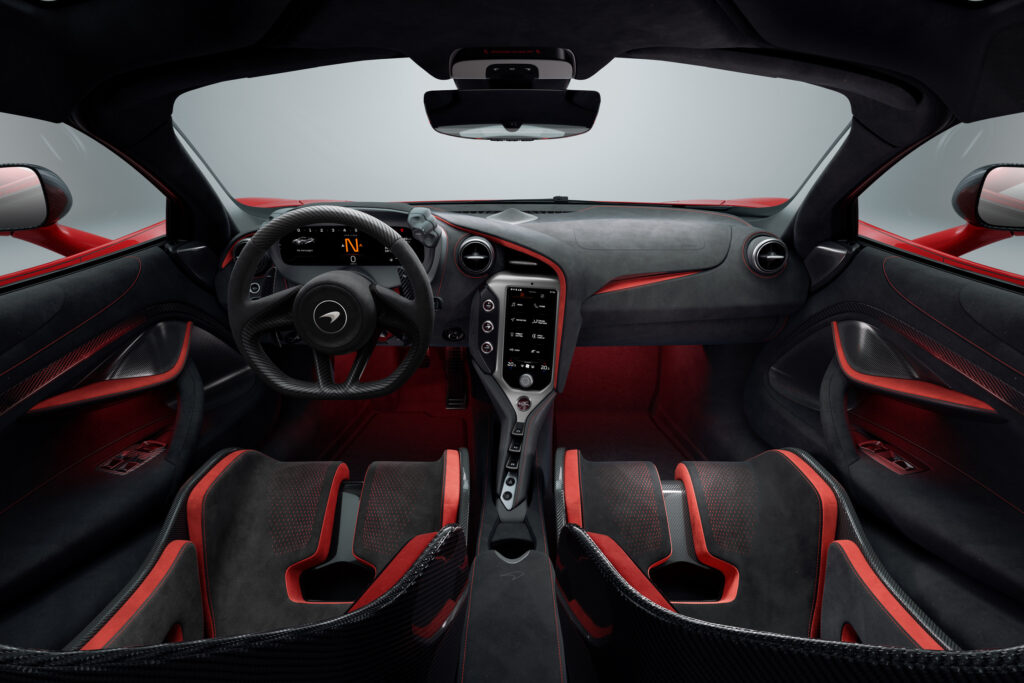
The 750S borrows the broad strokes of its design from the 720S. It features revisions both in the name of looks and aerodynamic efficiency. A new, larger active rear wing increases downforce at high speeds and acts as an F1-inspired DRS system to reduce drag when accelerating. The doors feature channels that contribute to the overall aero and cooling abilities of the 750S, and there’s a deeper front splitter that has been designed not to add to the overhang of the car.
Meanwhile, the front-axle lift system has been reworked to allow deployment in 4 seconds as opposed to the 720S’ 10 seconds. The interior comes trimmed in Alcantara, and there are also Nappa leather options.
More: McLaren 720S GT3 EVO Brings Improved Aero And Revised Suspension
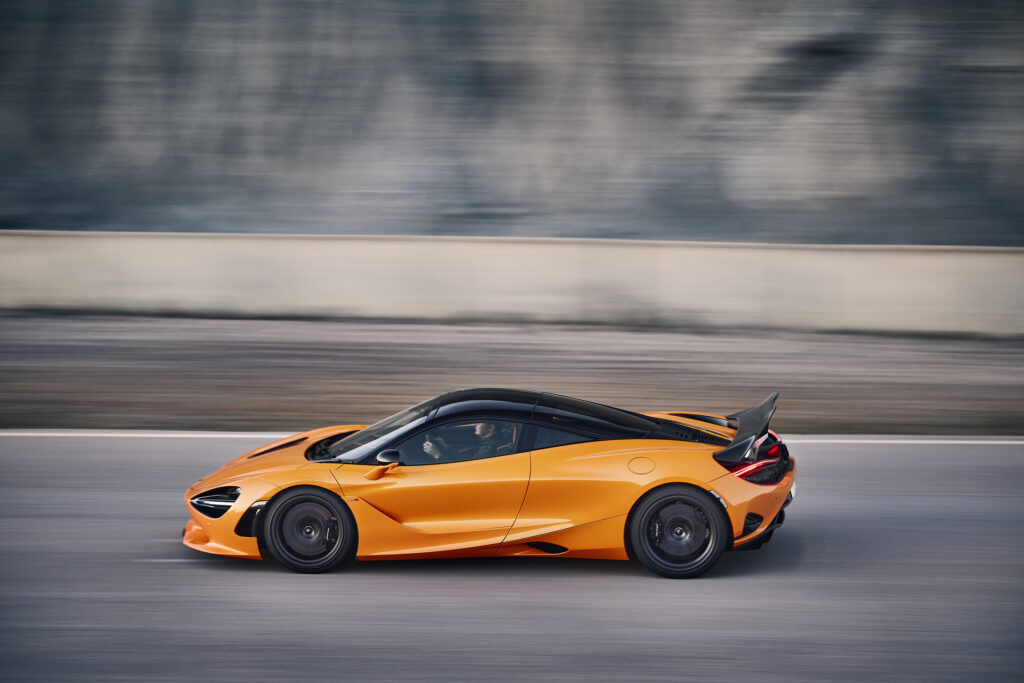
Apple CarPlay comes as standard, along with improved graphics and better touch sensitivity for the center screen. A new addition to the central display incorporates the new McLaren Control Launcher. The MCL allows drivers to save their favorite aero, engine, handling, and transmission configurations, allowing greater personalization of the driving experience.
If setting up the 750S for the track via the MCL options isn’t enough, owners can take it one step further with the new track brake upgrade. Taking learnings from the McLaren Senna, the option combines ceramic discs with monobloc calipers which include their own F1-inspired cooling tech. Also on offer are track-focused Pirelli P Zero Trofeo R tires designed with the 750S in mind. They replace the standard-issue Pirelli P Zero or P Zero Corsa tires.
Pricing And Availability
McLaren’s President of the Americas has previously suggested that the 2024 McLaren 750S is already sold-out deep into next year. But, if you’ve got the $324,000 asking price for the Coupe or $345,000 for the Spider (not including a transportation charge of $5,500 and an “America’s Accessory Pack” of $2,240), then McLaren retailers across the U.S. will accept your order.
Author Profile
Latest entries
 LifestyleOctober 22, 2024Rivian’s Halloween Update Includes Knight Rider And Back To The Future Costumes
LifestyleOctober 22, 2024Rivian’s Halloween Update Includes Knight Rider And Back To The Future Costumes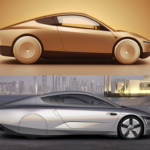 LifestyleOctober 14, 20245 Surprising Similarities Between Tesla’s Cybercab And VW’s XL1
LifestyleOctober 14, 20245 Surprising Similarities Between Tesla’s Cybercab And VW’s XL1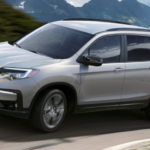 LifestyleOctober 7, 2024Teen’s Honda Accelerates To 120 MPH On Its Own, Cops Save Him With Wild Move
LifestyleOctober 7, 2024Teen’s Honda Accelerates To 120 MPH On Its Own, Cops Save Him With Wild Move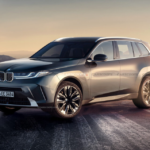 LifestyleSeptember 23, 20242027 BMW X5: What We Know About The Neue Klasse-Inspired SUV
LifestyleSeptember 23, 20242027 BMW X5: What We Know About The Neue Klasse-Inspired SUV


